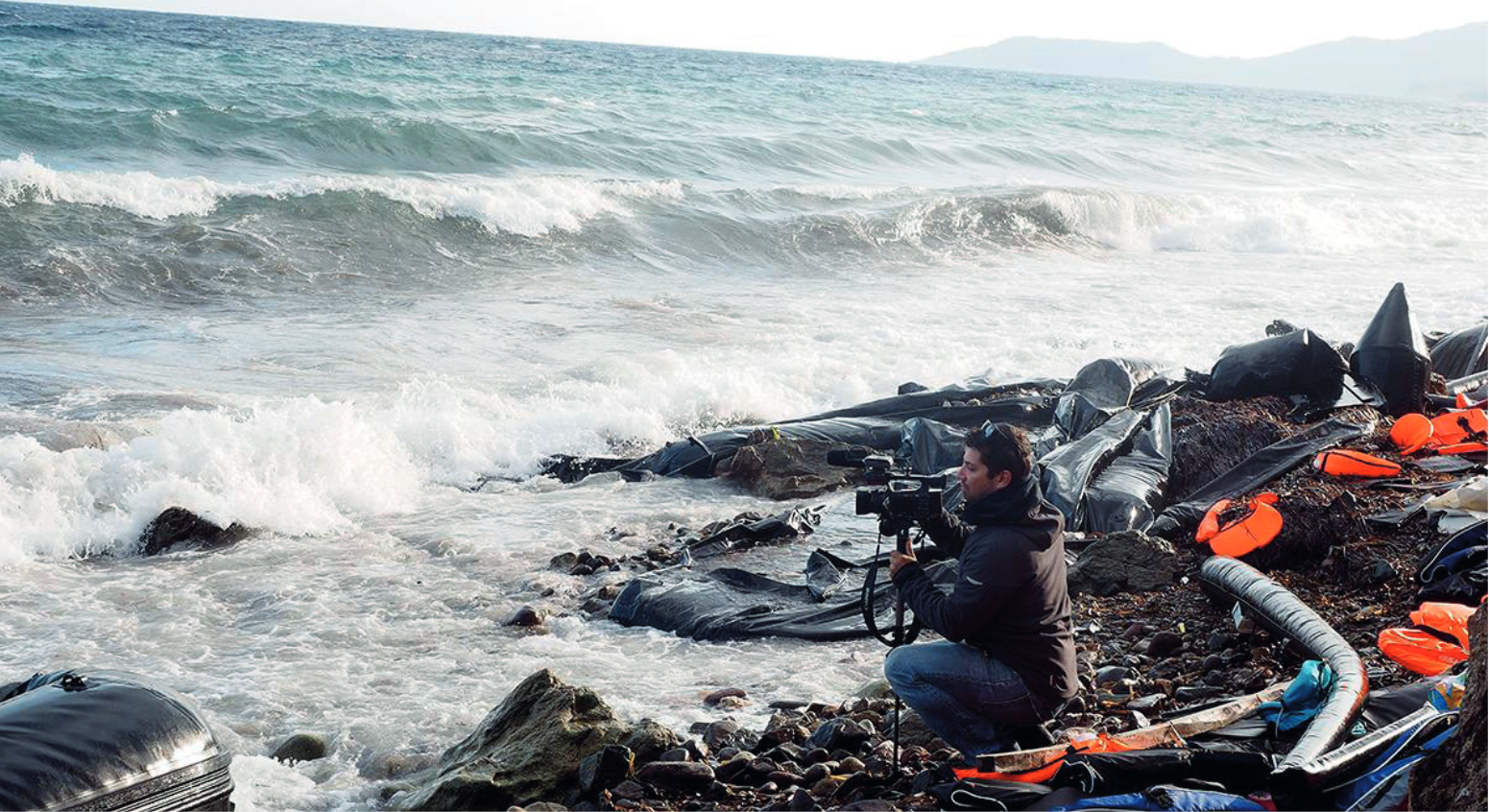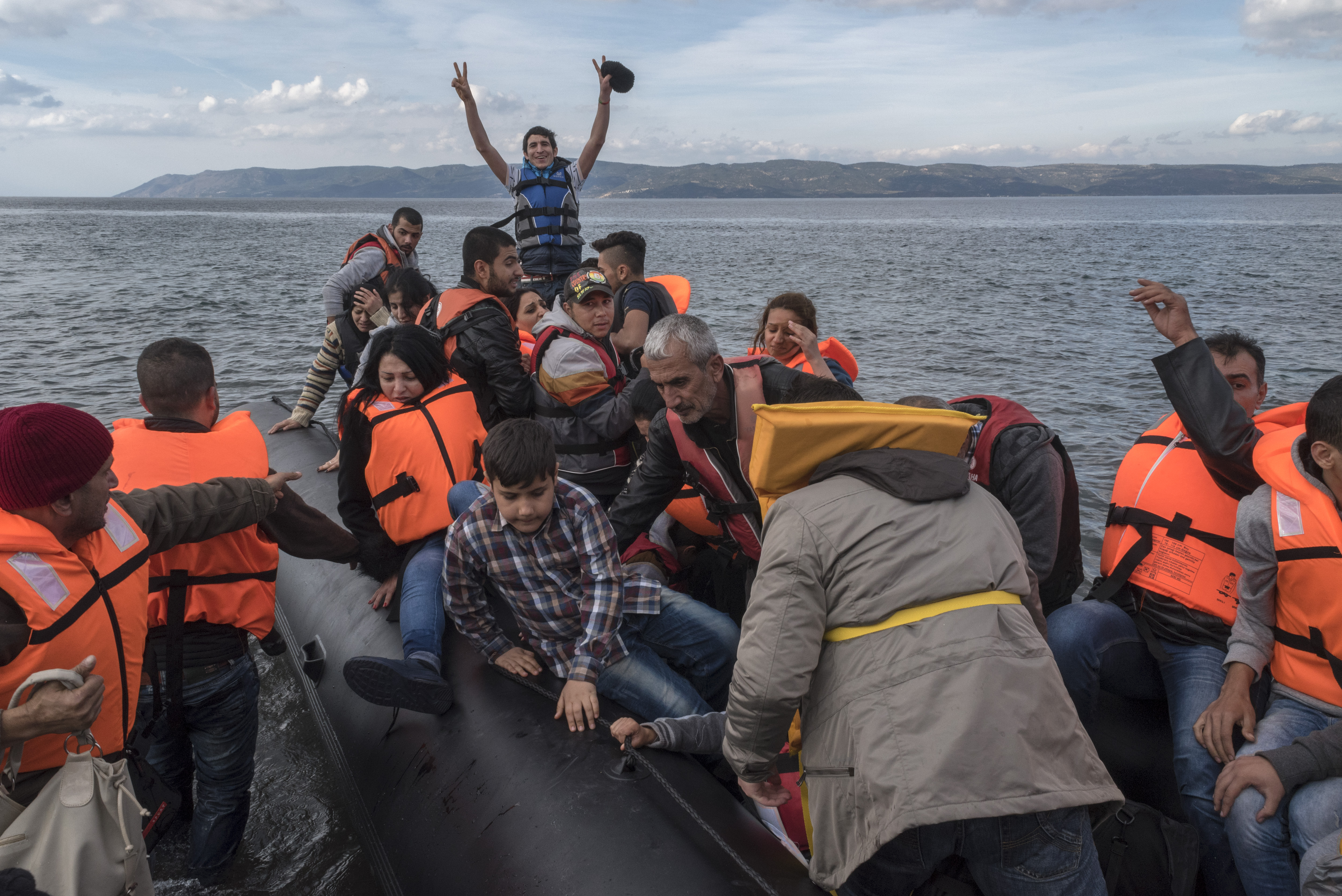Right now, we are witnessing the largest refugee and migrant crisis since the Socend World War. Three new research reports find that media coverage silences migrant voices, focuses on fear, and can lead to moral injury for journalists.
By Jon Eilenberg

News coverage of refugees and migrants is the subject of three new research reports published by the London School of Economics and Politics, the Overseas Development Institute, and The Reuters Institute for the Study of Journalism (RISJ) in collaboration with the International News Safety Institute. The reports focus on different aspects of this journalism, but reach similar conclusions: media coverage of refugee and migrant crisis can be highly problematic, and negatively affect both public perceptions, and journalists themselves.
The LSE project Migration and the Media published its final report last month titled ‘The European Migration Crisis and the Media – a Cross-European Press Content Analysis’ authored by Lilie Chouliaraki, Myria Georgiou and Rafal Zaborowski.
The report is a detailed analysis of how 22 newspapers from eight European countries covered the crisis over the summer and autumn of 2015. The study found that the narratives in these newspapers changed dramatically between July and November 2015 – moving from caution to humanitarianism and finally to fear. These phases corresponded with the closing of the Hungarian/Serbian border, the infamous photo of drowned toddler Alan Kurdi, and the Bataclan terror attack in Paris.
The authors find that throughout these phases, the crisis was predominantly covered as a ‘European’ crisis with emphasis on the perceived consequences for Europe. The refugees and migrants were thus represented as either suffering or dangerous Others, but they were not given a voice themselves. This may influence the attitudes of audiences about how the crisis should be addressed.
The report argues that the crisis is entering a new phase, and media outlets are struggling to safeguard the values of independent, fair and ethical journalism. In the conclusion, the authors make a series of recommendations for journalists, such as trying to include more refugee and migrant voices in reports, providing context within the news, and learning from research on media and migration.
Understanding public attitudes
The ODI’s report ‘Understanding public attitudes towards refugees and migrants’ is authored by Helen Dempster and Karen Hargrave. It is not specifically focussed on media coverage but one section does discuss news platforms as a prominent factor in shaping public attitudes.
The report finds that French media tend to report on social and cultural issues surrounding migration, while the US media are more concerned with economic consequences. Brazilian, Chinese and Indian media mostly report on internal migration, and in South Africa the focus is primarily on xenophobia and racism. Swedish and German media are among the most positive in their coverage, while British and Australian are among the most negative. In fact, the report argues, the British press is more likely than its European counterparts to frame refugees as potential threats.
Like the LSE report, the ODI also notices the lack of refugee and migrant voices within news content. They argue this is connected to online news and increasing competition over audience numbers:
“Issues around polarised reporting and a lack of nuance in coverage should be situated within the rapidly changing context in which journalism is taking place.” (ODI report)
In conclusion, the report section argues that it is difficult to make a direct link between media coverage and public attitudes. The media do, however, set the agenda and shape the general public debate, which makes them an important part of understanding public attitudes towards the crisis.
The International News Safety Institute (INSI) carried out the research for the final report, published by the Reuters Institute for the Study of Journalism. Authored by Anthony Feinstein and Hannah Storm, the report examines the emotional toll experienced by journalists covering the refugee crisis. The study is based on a survey of 80 journalists from nine American and British media organisations and a series of interviews with journalists and managers.
Rather than PTSD or depression among journalists, the report finds that the most common issue was the experience of moral injury, a term often connected with military service. Moral injury is defined in the report as
“the injury done to a person’s conscience or moral compass by perpetrating, witnessing, or failing to prevent acts that transgress personal moral and ethical values or codes of conduct”.
The report acknowledges that the experiences of the journalists are not in any way comparable to the traumas of the refugees themselves, but being exposed to a humanitarian crisis first-hand can still have serious consequences. The journalists particularly at risk of moral injury included those with higher workloads, those working alone, those not receiving organisational support, those who had not previously covered conflicts, and those with children of their own.
One interviewee, the BBC journalist Jonathan Paterson, told the researchers:
“I think the children thing is particularly poignant for a lot of people because a lot are parents and they found that a little more difficult than they were expecting to, not because we don’t see that in war and earthquakes, [but because] it’s mainland Europe and you don’t expect to see thousands of people walking along a track, crossing a border, heading past all those things that are so familiar to us”.
In some instances, the experience of moral injury can lead to journalists abandoning the role as passive observers and try to help the refugees directly. This behaviour is described in the report as coming with a risk of further moral injury, and the authors recommend that journalists draw a line between their work and aid work, and for organisations to provide training in moral injury.
A short summary of the research from the INSI can be read here.

These three reports focus on different aspects of journalism about the refugee crisis, including its production, content and consequences. Taken together they highlight the challenges for reporters covering this pressing humanitarian topic.
The full reports can be found here:
ODI: https://www.odi.org/sites/odi.org.uk/files/resource-documents/11600.pdf
Reuters Institute for the Study of Journalism: http://reutersinstitute.politics.ox.ac.uk/sites/default/files/Storm%20and%20Feinstein%20-%20Emotional%20Toll.pdf






